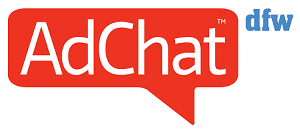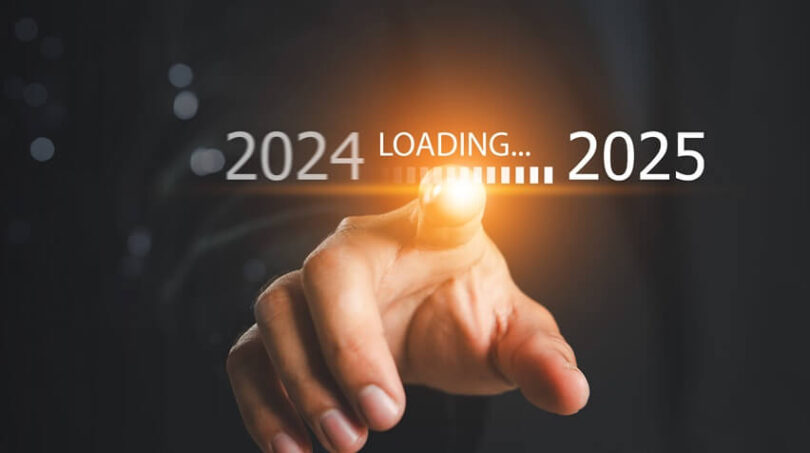Advertising agencies are entering 2025 with a mix of excitement and uncertainty.
Nearly two-thirds of agency professionals feel good, optimistic, and/or confident about the future of digital advertising. At the same time, more than seven in 10 say their jobs have become more difficult in the past two years, as inefficient processes, rising costs, and siloed systems hinder progress. On top of that, external forces—such as signal loss, shifting and ever-fragmenting media landscapes, and evolving audience behaviors—have added fresh layers of complexity.
Despite these hurdles, agencies are increasingly focusing on innovation as a way forward. Looking to 2025 and beyond, agencies are preparing for a future that is as much about overcoming challenges as it is about capitalizing on new opportunities. Whether through enhancing and supporting team talent, building more resilient tech stacks, adopting AI and automation solutions, or seeking opportunities for increased transparency, emerging trends are showing how agencies can drive growth and efficiency.
Trend #1: Elevating Talent as a Competitive Advantage
Talent continues to be a key differentiator in the agency world. A staggering 97% of advertisers cite access to talent as a top priority for agencies, yet only 47% feel they have the talent they need. This gap represents a growing challenge as agency leaders look to 2025, particularly as they face increasing pressure to deliver high-impact results.
To address this talent gap, agencies must rethink not only how they equip employees with tools, but also how they attract, retain, and develop their teams. With many agencies continuing to consider and implement RTO policies, creating environments where employees feel supported and empowered to focus on meaningful, high-value tasks is critical—particularly in an industry that has long grappled with widespread burnout.
Automation and AI can play a pivotal role here. By reducing the amount of time spent on low-value, manual, and redundant tasks, leaders can better engage their employees, allowing them to maximize their potential and contribute to more strategic, creative, and profitable work.
“We can use tech to really help people focus on the things that they’re excited about in advertising and to keep people in the industry,” says Michael Thill, VP of Agency Development at Basis. “The attrition rate in advertising is so high, particularly at agencies. But if we can free people up to really do what they’re excited about—to help them get back to the work that got them into the industry to begin with—that’s going to be a win across the board.”
Beyond elevating their talent through tech, leaders should consider other strategies to support and empower their teams. Providing robust professional development opportunities, committing (or re-committing) to diversity, equity, and inclusion efforts, and considering flexible work arrangements can all serve this goal.
Agencies that prioritize empowering their teams through a combination of the intentional use of tech, robust training, and fostering a culture of inclusivity will be better positioned to deliver high-value work. By viewing talent not as a cost center but as a key strategic investment, agencies can foster innovation, drive profitability, and secure a competitive edge.
Trend #2: Shifting From Hype to Practicality on AI and Automation
AI has been dominating industry conversations ever since generative AI burst onto the scene. And though the technology holds significant potential for advertisers, it’s critical to remember that AI has long been foundational to programmatic advertising. For instance, machine learning algorithms have been used for years to optimize ad targeting, enhance bidding strategies, and predict consumer behaviors.
In 2025, agencies must move beyond hype and experimentation and focus on extracting real value from AI. By pinpointing specific applications of the tech, integrating tools effectively into existing operations, and distinguishing between genuinely transformative innovations and existing tools that have simply been rebranded, agency leaders can unlock AI’s full potential.
Automation stands out as a prime example, given its ability to optimize workflows and centralize data and communications so that teams can prioritize tasks that demand creativity and strategic insights—work that AI can’t replicate. “Many leaders are looking for places where they can create operational efficiencies so that their teams can be freed up to focus on creative thinking and to look at things from a birds-eye view,” says Thill. “Every department inside of an agency wants to find AI-driven automation solutions to do low-value, repetitive tasks.”
As Mike Olson, EVP of Client Development at Basis, points out, the true value of AI and automation lies in the combination of technology and skilled talent. By reducing the time spent on routine tasks, employees are empowered to take on more impactful work that adds value to an agency’s overall objectives.
“Ultimately, it’s your people who will enable you to get the most out of this technology,” says Olson. “Even with the best AI tools, if you don’t have skilled teams to use them—or if high turnover forces you to constantly re-train people—you’ll struggle to unlock their full potential.”
Beyond embracing AI and automation tools, agency leaders need to think carefully about how they tell the story of this tech to their clients. Clients may wonder why they should pay the same fees when AI is handling more tasks, and others may be concerned about how their data is being fed into these tools (and what protections exist).
“Agencies must show clients what guardrails they’re putting in place for compliance, privacy, and security, as well as communicate to clients the higher value work they’re able to produce since their talent is free to do more challenging tasks,” says Thill.
Trend #3: Building Resilient Tech Stacks
As agencies look to the year ahead, many are focused on identifying ways to further optimize their operations by determining what tools in their tech stacks are essential, which are redundant, and which are obsolete.
Streamlined tech stacks not only improve overall efficiency but also ensure that data is clean, organized, and ready for action—which is particularly critical amidst increasing signal loss. While some agencies grapple with outdated platforms that don’t meet the demands of today’s complex digital advertising landscape, others struggle with disconnection between those platforms. Media and tech stack fragmentation is a driving force behind these problems: More than half of agency professionals juggle six or more tools to manage client campaigns, and 17.3% use 10 or more. Research shows that teams waste 13% of their time and 12% of their effort when different platforms don’t work well together, and this disconnection can lead to missed opportunities, errors, and slower decision-making.
To tackle these challenges, agencies are looking for ways to streamline their tech stacks and increase interoperability between systems. “The real challenge is figuring out how to bridge the gap between different data sources into one single source of truth that allows teams to act on data in accurate and impactful ways and deliver better outcomes for clients,” says Thill. “That allows leaders to see where they can improve their business.”
Without a single source of truth, agencies must navigate crippling fragmentation across geographies, partners, and publishers, making it difficult to operate at the speed clients demand. Solutions like automated advertising platforms can play a key role in improving interoperability, reducing repetitive manual tasks while also serving as that critical single source of truth, thus enabling agencies to better manage disparate data sources. “For billing, in particular, being able to turn to a single automated system means getting payments faster and improving the financial health of the business,” says Olson.
Amidst fluctuating economic uncertainty, signal loss, and other complexities, having a strong and resilient tech stack—one that’s designed for both the present and the future—can become a key differentiator for agencies.
Trend #4: Increasing Transparency
In the face of a rapidly evolving industry, agencies are increasingly prioritizing resilience and future-forward strategies to stay competitive. Among these, transparency stands out as a critical trend for 2025—one that impacts both agencies’ internal operations and client relationships. This push isn’t just a response to external pressures; it’s also driven by the need to build more sustainable, profitable business models.
Agencies’ renumeration models, in particular, have proven to be a significant barrier to increased transparency. Traditional models—such as fixed time-and-materials structures—tend to reinforce behaviors that can limit flexibility and adaptability. For instance, if an agency is paid based on the number of hours worked, there is little incentive to streamline processes or invest in automation tools, since more hours worked means lower revenue. In fact, 87% of advertisers believe agencies are resistant to adopting models that require greater transparency into how they make money.
Failing to adopt such models, however, can lead to burnout, inefficiency, and an erosion of client trust—all of which are already significant problems throughout the industry. In 2024, 43.4% of agency professionals said their agency’s client relationships were more strained than two years prior, and agencies that rely on outdated or opaque pricing models risk worsening client relationships.
There’s also a misconception that embracing transparency will inevitably result in lost revenue—but that doesn’t have to be the case. “As the demand for transparency intensifies, agencies have a unique opportunity to move away from relying on hidden fees for revenue and focus on genuinely adding value for their clients,” says Olson. “The key will be educating clients on what constitutes high-value work and demonstrating how automating low-value tasks not only frees up resources, but also enables teams to engage in more strategic, impactful work that drives better results—and, for the agencies, healthier profit margins.”
Embracing transparency sets agencies up for long-term profitability by building trust, strengthening client relationships, and allowing teams to do their best work. As clients become more aware of the value they’re receiving, agencies that clearly communicate how their services contribute to business success will foster loyalty and repeat clients, cultivating more sustainable revenue streams.
Looking Ahead: 2025 Advertising Trends
Amidst increasing complexity of client demands, tightening margins, and a deeply fragmented media landscape, agencies must be intentional and proactive in the year ahead. To thrive in this environment, leaders must embrace innovation—whether by leveraging AI and automation, optimizing tech stacks, bolstering their talent, or fostering increased transparency. In doing so, they can take advantage of the opportunities presented by these emerging trends to proactively increase efficiency, improve client relationships, and drive long-term profitability.
Interested in exploring more of the trends that are set to impact advertising in 2025? Then check out Reality Check: The 2025 Advertising Trends Report.








